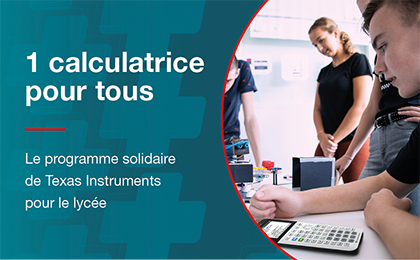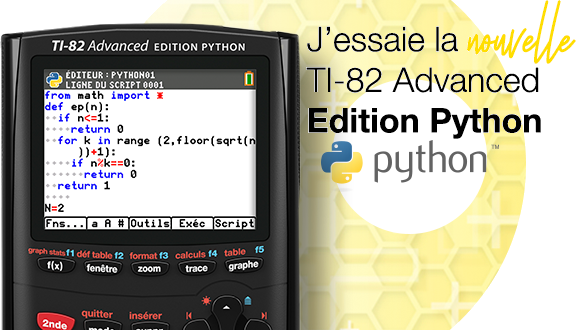 by compsystems » 19 Nov 2017, 16:28
by compsystems » 19 Nov 2017, 16:28
Ok, but the problem of the ti68K and tinspire do not have a flag to override the automatic simplification, for this reason the expression must be shown between strings, not in prettyprint.
It is very useful that in future versions the developers of the tinspire, add a flag to eliminate the automatic simplification as does the hp-prime
Examples
- Code: Select all
ex#0:
qpirlne( (2*π/3)+(3*π/4) , 0) -> 17/12*π
qpirlne( (2*π/3)+(3*π/4) , 1) -> 1137949/255685 // Q1
qpirlne( (2*π/3)+(3*π/4) , 2) -> 4+(115209/255685) // Q2
qpirlne( (2*π/3)+(3*π/4) , 3) -> 17/12*π // PI
qpirlne( (2*π/3)+(3*π/4) , 4) -> (2*π/3)+(3*π/4) // ROOT
qpirlne( (2*π/3)+(3*π/4) , 5) -> (2*π/3)+(3*π/4) // LN
qpirlne( (2*π/3)+(3*π/4) , 6) -> (2*π/3)+(3*π/4) // e
ex#1:
qpirlne( LN(3*π)-LN(√(5)), 0) -> LN( (3*π*√(5)/5) )
qpirlne( LN(3*π)-LN(√(5)), 1) -> 55715/38728 // Q1
qpirlne( LN(3*π)-LN(√(5)), 2) -> 1+(16987/38728) // Q2
qpirlne( LN(3*π)-LN(√(5)), 3) -> LN( (3*π*√(5)/5) ) // PI
qpirlne( LN(3*π)-LN(√(5)), 4) -> LN( (3*π*√(5)/5) ) // ROOT
qpirlne( LN(3*π)-LN(√(5)), 5) -> LN( (3*π*√(5)/5) ) // LN
qpirlne( LN(3*π)-LN(√(5)), 6) -> LN(3*π)-LN(√(5)) // e
ex#2:
qpirlne( LN((2/5))-LN(√(2)), 0) -> -LN((25/2))/2
qpirlne( LN((2/5))-LN(√(2)), 1) -> -116599/92329 // Q1
qpirlne( LN((2/5))-LN(√(2)), 2) -> -1+(-24270/92329) // Q2
qpirlne( LN((2/5))-LN(√(2)), 3) -> LN((2/5))-LN(√(2)) // PI
qpirlne( LN((2/5))-LN(√(2)), 4) -> LN((2/5))-LN(√(2)) // ROOT
qpirlne( LN((2/5))-LN(√(2)), 5) -> -LN((25/2))/2 // LN
qpirlne( LN((2/5))-LN(√(2)), 6) -> LN((2/5))-LN(√(2)) // e
ex#3:
qpirlne( e^(2*π/(3*√(7))), 0) -> e^((2*π*√(7)/21))
qpirlne( e^(2*π/(3*√(7))), 1) -> 224192/101585 // Q1
qpirlne( e^(2*π/(3*√(7))), 2) -> 1+(21022/101585) // Q2
qpirlne( e^(2*π/(3*√(7))), 3) -> e^(2*π/(3*√(7))) // PI
qpirlne( e^(2*π/(3*√(7))), 4) -> e^(2*π/(3*√(7))) // ROOT
qpirlne( e^(2*π/(3*√(7))), 5) -> e^(2*π/(3*√(7))) // LN
qpirlne( e^(2*π/(3*√(7))), 6) -> e^(2*π/(3*√(7))) // e
ex#4:
qpirlne( 7*π/√(90), 0) -> 7*π*√(10)/30
qpirlne( 7*π/√(90), 1) -> 171470/73971
qpirlne( 7*π/√(90), 2) -> 260521/112387
qpirlne( 7*π/√(90), 3) -> 7*π/√(90)
ex#5:
qpirlne( 1/(3+i*√(3)), 0) -> (1/4)-i*((√(3)/12))
qpirlne( 1/(3+i*√(3)), 1) -> (1/4)-(1/4)*i*√(1/3) // Q1
qpirlne( 1/(3+i*√(3)), 2) -> (1/4)-(i*37829/262087) // Q1
qpirlne( 1/(3+i*√(3)), 3) -> 1/(3+i*√(3)) // PI
qpirlne( 1/(3+i*√(3)), 4) -> (1/4)-i*((√(3)/12)) // ROOT
qpirlne( 1/(3+i*√(3)), 5) -> 1/(3+i*√(3)) // LN
qpirlne( 1/(3+i*√(3)), 6) -> 1/(3+i*√(3)) // e
ex#6:
qpirlne( ACOS((-1/2)), 0) -> 2/3*PI
qpirlne( ACOS((-1/2)), 1) -> 138894/66317 // Q1
qpirlne( ACOS((-1/2)), 2) -> 2*(6260/66317) // Q2
qpirlne( ACOS((-1/2)), 3) -> 2/3*PI // PI
qpirlne( ACOS((-1/2)), 4) -> ACOS((-1/2) // ROOT
qpirlne( ACOS((-1/2)), 5) -> ACOS((-1/2) // LN
qpirlne( ACOS((-1/2)), 6) -> ACOS((-1/2) // e
ex#7:
qpirlne( COS((3*π/4)), 0) -> -√(-2)/2
qpirlne( COS((3*π/4)), 1) -> -195025/275807 // Q1
qpirlne( COS((3*π/4)), 2) -> -195025/275807 // Q2
qpirlne( COS((3*π/4)), 3) -> COS((3*π/4)) // PI
qpirlne( COS((3*π/4)), 4) -> -√(1/2) // ROOT
qpirlne( COS((3*π/4)), 5) -> COS((3*π/4)) // LN
qpirlne( COS((3*π/4)), 6) -> COS((3*π/4)) // e
ex#8:
qpirlne( COS(π/12), 0) -> (√(3)+1)*(√(2)/4)
qpirlne( COS(π/12), 1) -> 129209/133767 // Q1
qpirlne( COS(π/12), 2) -> 272847/282472 // Q2
qpirlne( COS(π/12), 3) -> COS((3*π/4)) // PI
qpirlne( COS(π/12), 4) -> (√(3)+1)*(√(2)/4) // ROOT
qpirlne( COS(π/12), 5) -> COS(π/12) // LN
qpirlne( COS(π/12), 6) -> COS(π/12) // e
ex#9:
qpirlne( SIN(π/10), 0) -> (-1+√((5)))/4
qpirlne( SIN(π/10), 1) -> 98209/317811 // Q1
qpirlne( SIN(π/10), 2) -> 98209/317811 // Q2
qpirlne( SIN(π/10), 3) -> SIN(π/10) // PI
qpirlne( SIN(π/10), 4) -> (-1+√((5)))/4 // ROOT
qpirlne( SIN(π/10), 5) -> SIN(π/10) // LN
qpirlne( SIN(π/10), 6) -> SIN(π/10) // e
ex#10:
qpirlne( SIN(π/8), 0) -> √(2-√(2))/2
qpirlne( SIN(π/8), 1) -> 69237/180925 // Q1
qpirlne( SIN(π/8), 2) -> 69237/180925 // Q2
qpirlne( SIN(π/8), 3) -> SIN(π/8) // PI
qpirlne( SIN(π/8), 4) -> √(2-√(2))/2 // ROOT
qpirlne( SIN(π/8), 5) -> SIN(π/8) // LN
qpirlne( SIN(π/8), 6) -> SIN(π/8) // e
ex#11:
qpirlne( COS(π/5), 0) -> (1+(√(5)))/4
qpirlne( COS(π/5), 1) -> 98209/121393 // Q1
qpirlne( COS(π/5), 2) -> 317811/392836 // Q2
qpirlne( COS(π/5), 3) -> COS(π/5) // PI
qpirlne( COS(π/5), 4) -> (1+(√(5)))/4 // ROOT
qpirlne( COS(π/5), 5) -> COS(π/5) // LN
qpirlne( COS(π/5),, 6) -> COS(π/5) // e


















